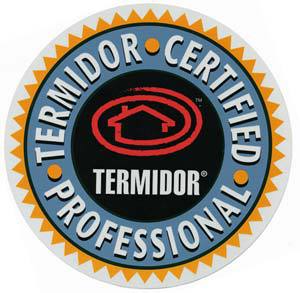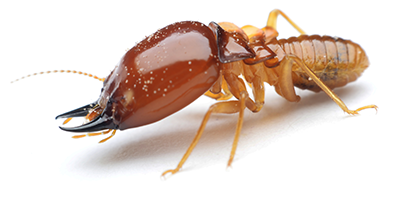Termite control in Lexington
Guarantee Pest Control, Inc. can handle termite control and is experienced in this type of application. Termites do more damage to homes than all natural disasters combined. Early treatment of this problem is essential to prevent further damage to the structural integrity of your home or office building. Please call us immediately if you think you have a termite problem.
Termite control
At Guarantee Pest Control, Inc., we provide the conventional termite treatments using Termidor. Termite treatments may involve drilling through concrete slabs, both inside and outside the home, as well as trenching and rodding soil around the home's outside perimeter. Treatment in crawlspace areas may include treating areas adjacent to the foundation and support piers, removing wood debris, and scraping down any termite shelter tubes that are visible. Annual Termite Control Warranty is offered after the initial termite treatment. This contract is a re-treatment warranty only.


Soil pre-treatment
Our soil pre-treatment comes with a five-year guarantee after completion. Pre-treatment for new construction typically takes at least two applications, depending on the type of structure. Concrete slab structures must be treated before the concrete is poured, and before the plastic and wire are put in place. Crawlspace structures can be treated once the foundation is complete. Treatment is done next to the foundation inside and out, and around the support piers.
The second phase to any pre-treatment takes place when the back fill is completed around the outside of the structure, and before any attached concrete slabs are poured. This ensures there is a consistently treated zone around the outside of the structure.
Termite conditions
Certain conditions around your house may attract termites and make them more difficult to find and control. They are listed below. Correct, repair, or eliminate them if you can.
- Water-damaged wood from a leak, a plumbing problem, excessive moisture, etc.
- Soil or mulch around the foundation that touches brick facing or wood siding
- Firewood stacked against the house
- Faulty grade, allowing water to accumulate next to the foundation
- Missing rain gutters, downspouts, or splash blocks
- Landscaping timbers, wood fences, or other untreated wood next to the house
- Poor ventilation in crawlspace
- Wood debris in crawlspace
- Wet siding from roof leaks or sprinkler systems
- Foam insulation on foundation wall or under slab

